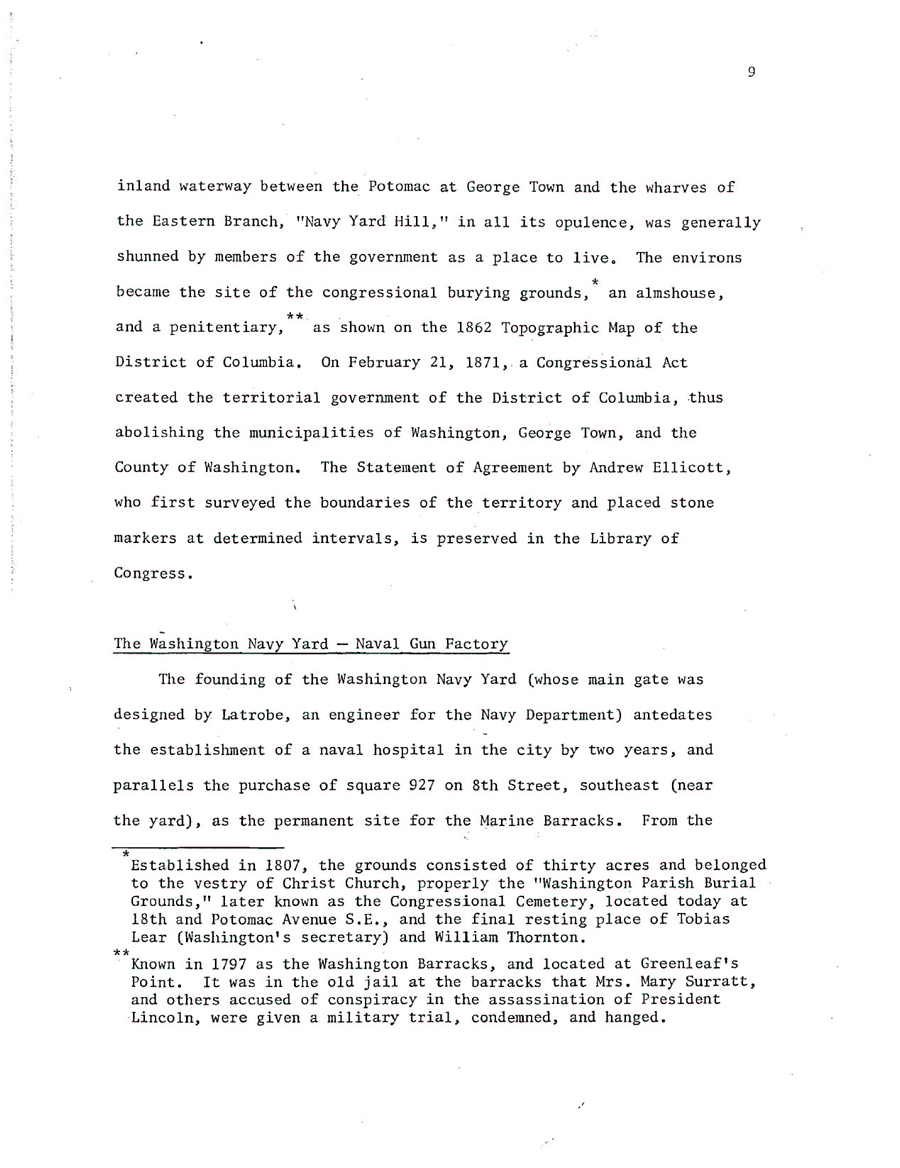

(continued from page 8) inland waterway between the Potomac at George Town and the wharves of the Eastern Branch, “Navy Yard Hill,” in all its opulence, was generally shunned by members of the government as a place to live. The environs became the site of the congressional burying grounds, (SEE NOTE BELOW), an almshouse, and a penitentiary, (SEE NOTE TWO BELOW) as shown on the 1862 Topographic Map of the District of Columbia. On February 21, 1871, a Congressional Act created the territorial government of the District of Columbia, thus abolishing the municipalities of Washington, George Town, and the County of Washington. The Statement of Agreement by Andrew Ellicott, who first surveyed the boundaries of the territory and placed stone markers at determined intervals, is preserved in the Library of Congress.
The founding of the Washington Navy Yard (whose main gate was designed by Latrobe, an engineer for the Navy Department) antedates the establishment of a naval hospital in the city by two years, and parallels the purchase of Square 927 on 8th Street, southeast (near the yard), as the permanent site for the Marine Barracks. From the (continued on page 12)
[NOTE 1 – Established in 1807, the grounds consisted of thirty acres and belonged to the vestry of Christ Church, properly the “Washington Parish Burial Grounds,” later known as the Congressional Cemetery, located today at 18th and Potomac Avenue S.E., and the final resting place of Tobias Lear (Washington’s secretary) and William Thornton.]
[NOTE 2 – Known in 1797 as the Washington Barracks, and located at Greenleaf’s Point. It was in the old jail at the barracks that Mrs. Mary Surratt, and others accused of conspiracy in the assassination of President Lincoln, were given a military trial, condemned, and hanged.]
This site is sponsored by the Friends of the Old Naval Hospital
Last updated November 22, 2008